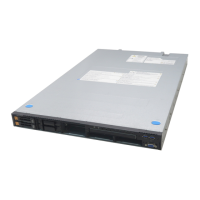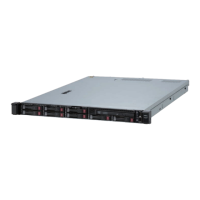What causes Unsupported format version error on NEC Server?
- TTina SpenceSep 16, 2025
Some update files may be corrupted. Obtain update files again.

What causes Unsupported format version error on NEC Server?
Some update files may be corrupted. Obtain update files again.
What to do if NEC Computer Hardware data cartridge cannot be ejected?
If the data cartridge doesn't eject when pressing the EJECT button, the backup software might have locked the drive. Try closing the software. You can also try restarting the system or turning the power off and on. If the system detects a drive failure, it might prevent ejection; in this case, try restarting the system or turning the power off and on. If software was used for ejection but the cartridge didn't eject, execute the software ejection again, then press the EJECT button.
What to do if cache contains dirty data and VDs are missing on NEC Express5800 Server?
If your NEC Server reports that the cache contains dirty data and some VDs are missing or will go offline, power off your system immediately. Check all cable connections to ensure all disks are present. If the error persists, contact your service representative. Be aware that pressing 'X' will permanently discard the cached data.
How to fix Writing has failed error on NEC Express5800?
Try again. If the error persists, contact your service representative because a failure may have occurred in BMC.
What is considered Invalid retry count for NEC Express5800 Server?
You can only use numeric values.
Why is NEC Computer Hardware transfer speed not correct?
Because the internal LAN controller of the Tape Blade operates on a network with a transfer rate of 1Gbps, open the network property dialog box in the control panel to set the 'Link Speed' value to match the value specified for the HUB.
How to fix NEC Computer Hardware MEZ1 Power Fault?
Check the installation status of the mezzanine card. If the same error persists, contact your service representative.
What causes failed to acquire the current revision on NEC Express5800?
If you are unable to acquire the current revision on your NEC Server, the network may be busy. Try again. If the error persists, contact your service representative because a failure may have occurred in BMC.
What causes Invalid address error on NEC Server?
Some update files may be corrupted. Obtain update files again.
What to do if my NEC Express5800 Server keeps rebooting at startup?
If your NEC Server repeatedly reboots at startup, access the BIOS SETUP utility during reboot. Then, change the [Server] - [OS Boot Monitoring] setting to [Disabled].
| Series | Express5800 |
|---|---|
| Category | Server |
| Processor | Intel Xeon processors |
| Network | Gigabit Ethernet, 10 Gigabit Ethernet (Varies by model) |
| Operating System Support | Windows Server, Linux variants |
| Form Factor | Tower, Rackmount (1U, 2U, etc. - varies by model) |
| Memory | DDR4 ECC DIMM (Capacity varies by model) |
| Storage | SAS/SATA HDD/SSD, NVMe SSD (Configuration varies by model) |
Details on warning labels placed on system components to alert users about potential hazards.
Provides essential precautions for safe server operation, emphasizing general safety measures and potential risks.
Covers safe practices for using power supplies and cords, including warnings about wet hands and proper outlet usage.
Outlines critical safety procedures for handling internal components, including warnings about lasers and lithium batteries.
Details crucial do's and don'ts during server operation to prevent hazards and ensure system integrity.
Provides essential instructions for successful server operation, covering installation, power, and environmental conditions.
Covers fundamental server operations such as powering on/off and using the security lock for door access.
Details the steps to power on the server, including checking peripherals and the POST process.
Explains the correct procedure for safely powering off the server and all connected peripheral devices.
Explains RAID configuration requirements for built-in disks and how to pair disks for mirroring.
Guides on how to locate failed hard disks using ESMPRO Manager and the procedure for replacement.
Details the manual procedure for restoring redundant disk configurations after failures or changes.
Introduces the BIOS SETUP utility for basic hardware configuration and management of server settings.
Describes how to start the BIOS SETUP utility and enter the main menu, including password entry.
Details how to set Supervisor and User passwords, and enable/disable the POWER switch for security.
Explains how to change the boot device order for starting the system and NEC EXPRESSBUILDER.
Guides on using the SCSISelect utility for configuring SCSI controller settings and device transfer speeds.
Details procedures for forced shutdown and clearing CMOS data or passwords using jumper pins.
Step-by-step guide on how to clear BIOS passwords by manipulating jumper switches on CPU/IO modules.
Introduces the ft Remote Management Card and its capabilities for remote server monitoring and control.
Guides on performing initial settings for the remote management card, including BMC configuration.
Explains how to connect to the server for remote management via a web browser and default network values.
Details how to configure BMC network settings, including IP addresses for LAN ports.
Explains how to use the remote KVM console for video, keyboard, and mouse control of the server.
Details how to launch the remote KVM console window from the control panel for server interaction.
Guides on configuring BMC settings, including reading, saving, and editing configuration files.
Covers network settings for BMC, including IP address and port configurations for remote management.
Details web server settings for the BMC, such as HTTP port, SSL enable/disable, and login attempts.
Provides guidelines for regular server checks and maintenance to ensure optimal condition.
Advises monitoring for failure occurrences using NEC ESMPRO and checking alerts on the management PC.
Guides on checking LED indications on the server for status and error detection.
Explains how to run system diagnostics to test server components and their connections.
Explains how errors are posted and categorized, including fatal, logon, access privilege, and network errors.
Lists common POST error messages, their causes, and recommended actions for resolution.
Provides a systematic approach to solving common server problems, starting with power and POST checks.
Provides critical safety warnings and precautions to be followed during component installation or removal.
Outlines essential anti-static measures to prevent damage to electronic components during installation.
Guides on installing 3.5-inch hard disk drives into server bays, including RAID configuration.
Details the procedure for replacing a failed hard disk drive, including locating and restoring configuration.
Highlights crucial precautions for installing ft Remote Management Cards, including power and static electricity.











